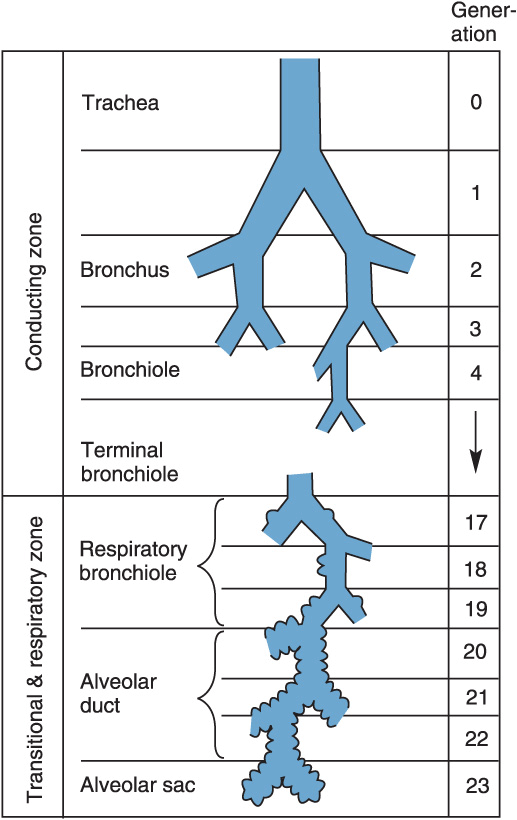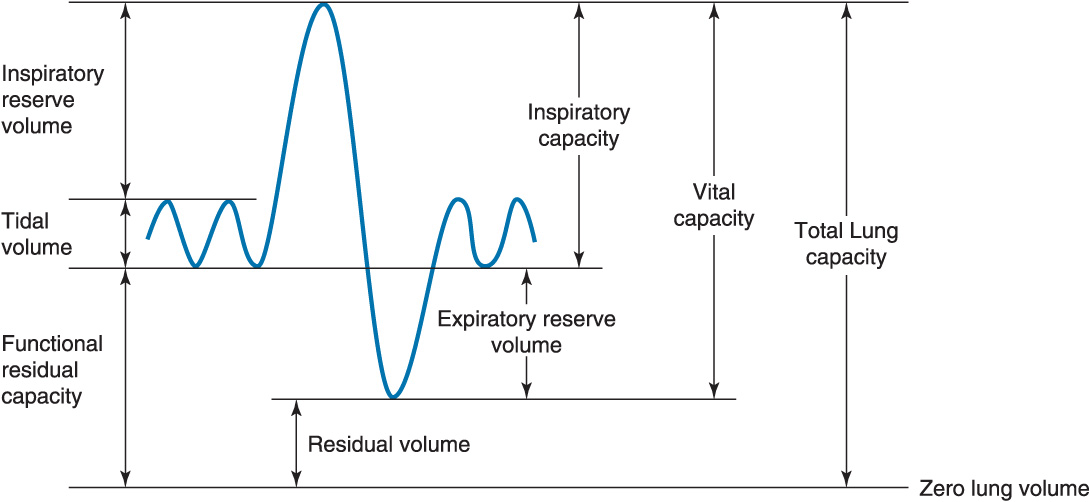• Lung compliance is influenced by a variety of factors, including lung volume, pulmonary blood volume, extravascular lung water, and pathological processes such as inflammation and fibrosis.

(Reproduced, with permission, from Guyton AC: Textbook of Medical Physiology, 7th ed. W.B. Saunders, 1986.)
(Reproduced, with permission, from Nunn’s Applied Respiratory Physiology, 5th ed. Lumb A [editor]. Butterworth-Heinemann, 2000.)

Ventilation/Perfusion Relationships
• Ventilation is the sum of all exhaled gas volumes in 1 min; Minute ventilation = Respiratory rate × Tidal volume.
• The fraction of inspired gas not participating in alveolar gas exchange is known as dead space. Dead space is composed of gases in nonrespiratory airways (anatomic dead space) as well as in alveoli that are not perfused (alveolar dead space).
• Dependent areas of both lungs tend to be better ventilated than do the upper areas because of a gravitationally induced gradient in intrapleural pressure (and transpulmonary pressure).
• Pulmonary blood flow is also not uniform because dependent portions of the lung receive greater blood flow than upper (nondependent) areas regardless of body position. Pulmonary vascular tone is heavily influenced by local factors with hypoxia being a powerful stimulus for vasoconstriction.
• The normal ventilation/perfusion (V/Q) ratio is 0.8 (alveolar ventilation is ~4 L/min, and pulmonary capillary ~5 L/min).
• Shunting is the process whereby desaturated, mixed venous blood returns to the left heart without being resaturated with O2 in the lungs. Physiologic shunt (e.g., communication between deep bronchial veins and pulmonary veins, the thebesian circulation, atelectasis) is typically less than 5%.
Effects of Anesthesia on Respiratory System
• The supine position reduces the FRC by 0.8 to 1.0 L, and induction of general anesthesia further reduces the FRC by 0.4 to 0.5 L. The decrease in FRC is not related to anesthetic depth and may persist for several hours or days after anesthesia.
• Prolonged administration of high inspired O2 concentrations may lead to resorption atelectasis and increases in absolute shunt.
• Anesthetic effects on gas exchange include increased dead space, hypoventilation, and increased intrapulmonary shunting. Inhalation agents, including nitrous oxide, also can inhibit hypoxic pulmonary vasoconstriction in high doses.

Full access? Get Clinical Tree






